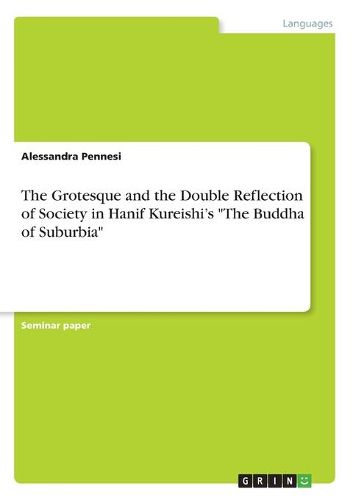Readings Newsletter
Become a Readings Member to make your shopping experience even easier.
Sign in or sign up for free!
You’re not far away from qualifying for FREE standard shipping within Australia
You’ve qualified for FREE standard shipping within Australia
The cart is loading…






Seminar paper from the year 2018 in the subject Literature - Basics, grade: 1, University of Bamberg, course: Postcolonial Literature, language: English, abstract: With the use of the word grotesque a whole range of different meanings is called into question. The cultural history of this word has crossed centuries, adopting for each epoch a different nuance of significance, so that it is virtually impossible to establish fixed, universal attributes to it. The very first examples of grotesques were the bizarre wall paintings found in Nero’s Domus Aurea, which represented elaborate knots and festoons of floral decoration and designs oddly transforming into snakes, satyrs [and] mythological animals (Clark). The essence of this art was later developed according to different interpretations, being associated to caricature and caprices in the seventeenth century and to horror and repulsion in the nineteenth century (Connelly). It is therefore important to consider that the grotesque is to be understood primarily as a cultural and social phenomenon, constantly changeable and subjected to the spirit of the times.
$9.00 standard shipping within Australia
FREE standard shipping within Australia for orders over $100.00
Express & International shipping calculated at checkout
Seminar paper from the year 2018 in the subject Literature - Basics, grade: 1, University of Bamberg, course: Postcolonial Literature, language: English, abstract: With the use of the word grotesque a whole range of different meanings is called into question. The cultural history of this word has crossed centuries, adopting for each epoch a different nuance of significance, so that it is virtually impossible to establish fixed, universal attributes to it. The very first examples of grotesques were the bizarre wall paintings found in Nero’s Domus Aurea, which represented elaborate knots and festoons of floral decoration and designs oddly transforming into snakes, satyrs [and] mythological animals (Clark). The essence of this art was later developed according to different interpretations, being associated to caricature and caprices in the seventeenth century and to horror and repulsion in the nineteenth century (Connelly). It is therefore important to consider that the grotesque is to be understood primarily as a cultural and social phenomenon, constantly changeable and subjected to the spirit of the times.